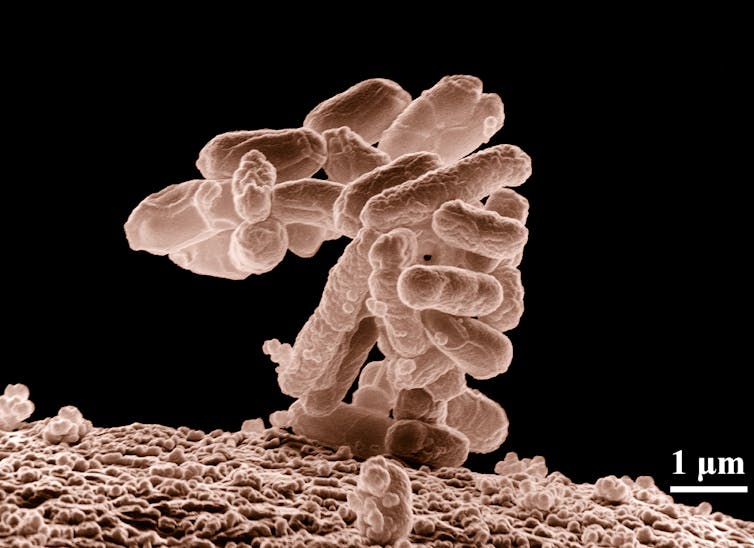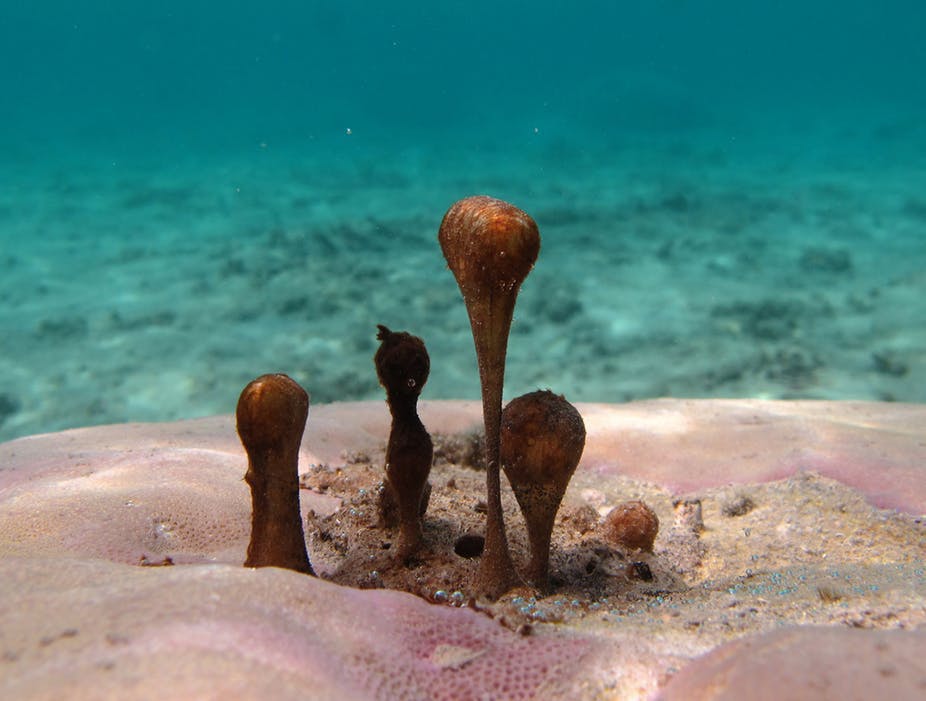Diversity, be it genetic, morphological, behavioural or ecological, is at the heart of many controversies. It fascinates us or worries us, depending on the context. But what is biological diversity? How useful is it, how is it generated and what are the foreseeable consequences of reducing it?
The incredible diversity of life
The life sciences have only recently begun to imagine the true extent of the diversity of life forms and the difficulty of quantifying it. Recent estimates of total eukaryotic diversity range from 1 to 5 × 107 species. Although only about ten thousand species of prokaryotes have been described, mainly because only a small number of bacteria can be grown in the laboratory, indirect molecular approaches (without culture) based on the analysis of DNA extracted from the environment suggest that there may be 109 or more prokaryotic species. However, even these already astronomical figures do not reflect the real diversity of life forms.
First, genotypic diversity within the same prokaryote species can be incredibly high. Members of one bacterial species share parts of their genome encoding essential metabolic and informational functions (called the core genomes), but often carry unique, strain-specific sequences for adaptation to local environmental pressures. In the case of the bacterium Escherichia coli, the core genome represents only 6% of the genes present in 61 sequenced strains.

E. coli bacteria. Eric Erbe, digital colorisation by Christopher Pooley, USDA
Secondly, the phenotypic diversity of living forms is greater than their genotypic diversity. Biological entities may exhibit complex life cycles with multiple states of differentiation and display phenotypic plasticity. This can confer the capacity to anticipate predictable seasonal changes or react to unpredictable changes by remodelling physiological processes to compensate for the potentially negative effects of changing conditions.
Third, genetically and morphologically identical individuals can also express considerable behavioural diversity. While behavioural variation among individuals in eusocial insect societies (queen and various workers) has been described since antiquity, the existence of individual behavioural specialization is now well documented throughout the animal kingdom.
Why such diversity?
Darwin proposed that species diversity might increase the productivity of ecosystems due to the division of labour among species, suggesting that each species is unique in how it exploits its environment. It thus follows that species-rich systems can exploit resources more efficiently than species-poor systems (known as the complementarity effect).
Diversity is also thought to make ecosystems, species and populations more resilient to environmental stresses. A large number of species may imply a certain level of functional redundancy: the loss of one species has a smaller effect in a diverse system than in a species-poor one (known as the insurance effect). Genotypic or phenotypic diversity within one population of the same species may also improve resistance to environmental change. For example, it is well documented that the diversity of a population can increase its resistance to epidemics.
Diversity could also favour the emergence of complex collective behaviours, including in organisms without a nervous system, as demonstrated by the cooperative division of labour in certain species of bacteria. This allows groups of bacteria to assume mutually incompatible tasks and acquire new functions. In this way, multicellular cyanobacteria gain the ability to simultaneously perform photosynthesis and nitrogen fixation even though these two tasks are incompatible, as the oxygen produced during photosynthesis permanently damages the enzymes involved in nitrogen fixation.
How is diversity generated?
The neo-Darwinian theory of evolution proposes that biological diversity is the consequence of genetic accidents (mutations and recombinations of genes, for example) that occur spontaneously and randomly, without regard for their usefulness. However, the magnitude of adaptive gains from diversity suggests that partial control of its generation may be beneficial to the survival of biological systems. In support of this hypothesis, numerous examples of mechanisms generating individual genetic and phenotypic diversity, here called “diversity generators” (DG), have been described in systems ranging from prokaryotes to complex multicellular organisms.
While they may differ in their origin and components, these DGs share common functional properties. They contribute to the high unpredictability of the composition and behaviour of biological systems, promote robustness and cooperation among populations, and operate mainly by manipulating the systems that control the interaction of living entities with their environment.
The nature of DGs seems to depend on r/K reproductive strategies. Organisms with short generation time and large populations (r strategy) have reactive DGs, such as horizontal gene transfer and SOS systems. They generate diversity in response to environmental stresses and participate in the well-known Red Queen dynamic, where competitors must constantly evolve to survive: “Now here, you see, it takes all the running you can do to keep in the same place” (Through the Looking-Glass, Lewis Carroll, 1871).
The emergence of complex multicellular organisms, with a long reproductive life cycle and smaller populations (K strategy), has favoured the selection of a new class of DGs such as mandatory sexual reproduction and generation of a large adaptive immune repertoire, which act in anticipation of stress. Sexual reproduction, through the process of meiosis, allows for significant mixing of alleles between the parents and thus great genetic diversity for the offspring. Likewise, the adaptive immune repertoire is randomly generated by recombination of the genes encoding the antigen receptors within lymphocytes.
Its potential for diversity is such that an individual randomly expresses only a fraction, which ensures the maintenance of significant individual diversity of the immune response within populations. These DGs generate the distinct so-called White Queen dynamic in reference to the famous quote of the White Queen in Through the Looking-Glass: “Sometimes I’ve believed as many as six impossible things before breakfast.” This metaphor seems particularly appropriate because the activity of these DGs is based on random phenotypic diversification, which is rarely adaptive at the individual level and favours the population (impossible things), and anticipates stress (before breakfast).
The existence of DGs leads us to consider evolution as a much more dynamic process and to give a new meaning to chance. If, as Einstein said, “God does not play dice,” biological entities seem to do so frequently, which would partly explain their great adaptability and survival. The ubiquity of DGs in living organisms also confirms that diversity is essential for adapting to environmental stress and that regulated self-generation of diversity must be considered as a fundamental trait of biological systems.
What consequences?
It is urgent to reconsider the importance of diversity, which is more than just icing on the cake. It is both a property of living organisms and a necessary condition for their survival.
Education and fundamental research are both subject to an increasing number of evaluation criteria. While these controls were initially developed to optimise the outcomes, they also lead to standardisation. Yet, we should perhaps ask ourselves: is it wise to homogenise the intellectual formation of individuals and research activities, while diversity is a source of robustness, synergy and complexity in all living systems?
Global population growth will require sustained food production during the 21st century. However, the industrialisation of agriculture over the past 50 years has led to a dramatic fall in the diversity of agricultural products. Plants and animals have been intensively selected for strength and productivity. While this strategy led to good results over the short term, it is reasonable to doubt the ability of standardised populations to resist future climate changes that will likely lead to the emergence of new pathogens. Each particular genotype/phenotype is optimised for one given set of environmental conditions and only individual diversity can guarantee the adaptation of populations to unpredictable changes in their environment.
Finally, the importance of diversity in ensuring the robustness of biological systems suggests that decreasing the diversity of natural ecosystems could, in the near future, lead to their sudden disruption, which would further hamper our ability to maintain stable food production.



 Neuren Pharmaceuticals Surges on U.S. Patent Win for Rare Disorder Drug
Neuren Pharmaceuticals Surges on U.S. Patent Win for Rare Disorder Drug  Ancient Mars may have had a carbon cycle − a new study suggests the red planet may have once been warmer, wetter and more favorable for life
Ancient Mars may have had a carbon cycle − a new study suggests the red planet may have once been warmer, wetter and more favorable for life  NASA and Roscosmos Chiefs Meet in Florida to Discuss Moon and ISS Cooperation
NASA and Roscosmos Chiefs Meet in Florida to Discuss Moon and ISS Cooperation  Kennedy Sets September Deadline to Uncover Autism Causes Amid Controversy
Kennedy Sets September Deadline to Uncover Autism Causes Amid Controversy  Trump Signs Executive Order to Boost AI Research in Childhood Cancer
Trump Signs Executive Order to Boost AI Research in Childhood Cancer  Blue Origin’s New Glenn Achieves Breakthrough Success With First NASA Mission
Blue Origin’s New Glenn Achieves Breakthrough Success With First NASA Mission  Eli Lilly’s Inluriyo Gains FDA Approval for Advanced Breast Cancer Treatment
Eli Lilly’s Inluriyo Gains FDA Approval for Advanced Breast Cancer Treatment  Trump and Merck KGaA Partner to Slash IVF Drug Costs and Expand Fertility Coverage
Trump and Merck KGaA Partner to Slash IVF Drug Costs and Expand Fertility Coverage  Cogent Biosciences Soars 120% on Breakthrough Phase 3 Results for Bezuclastinib in GIST Treatment
Cogent Biosciences Soars 120% on Breakthrough Phase 3 Results for Bezuclastinib in GIST Treatment  FDA Adds Fatal Risk Warning to J&J and Legend Biotech’s Carvykti Cancer Therapy
FDA Adds Fatal Risk Warning to J&J and Legend Biotech’s Carvykti Cancer Therapy  Lost in space: MethaneSat failed just as NZ was to take over mission control – here’s what we need to know now
Lost in space: MethaneSat failed just as NZ was to take over mission control – here’s what we need to know now  Lab-grown meat: you may find it icky, but it could drive forward medical research
Lab-grown meat: you may find it icky, but it could drive forward medical research  Tabletop particle accelerator could transform medicine and materials science
Tabletop particle accelerator could transform medicine and materials science  SpaceX Starship Explodes in Texas During Test, Citing Nitrogen Tank Failure
SpaceX Starship Explodes in Texas During Test, Citing Nitrogen Tank Failure 




























